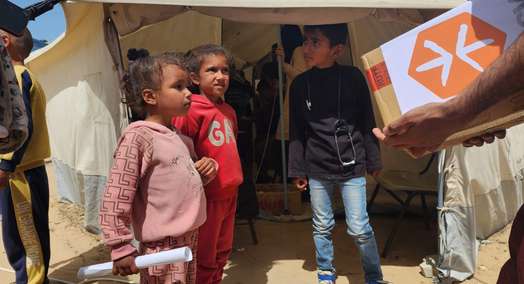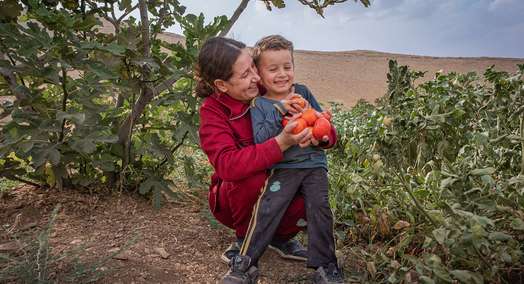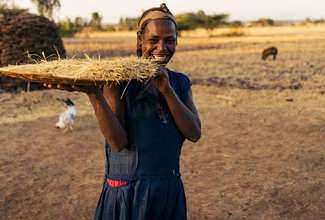The Closure of Kurdistan Region Camps in Iraq
Driving amongst the remnants of destruction caused by "ISIL", the effects of war and invasion can be seen. Yet, there are glimpses of hope: Lively parks, bazaars, and ice cream trucks playing their melody of “This ice cream is so cold, it will freeze your heart” fill Sinjar with vibrant colors.

Many people who returned years ago feel hope. However, the newly returnees are yet to experience it.
Post-war reflections
According to Humans Right Watch, during January 2024, The Iraqi Ministry of Migration and Displacement announced the July 30 as a deadline to encourage returns, the Ministry also announced a package of aid and incentives for returnees, including a one-time payment of four million Iraqi dinars (about US$3,000) per family, civil service, social security benefits, and interest-free small business loans.
The 23 camps across the KRI, as of mid-May, were a host to about 157,000 people, many of whom are from Sinjar, according to the Kurdistan Regional Government’s Interior Ministry.
People are forced to return to nothing
In 2014, "ISIL" invaded the Sinjar region and the surrounding area. Several million people were displaced, many of whom sought refuge in Kurdistan and lived in camps there. Ten years after the conflict, the Iraqi government declared that the displaced people must either return to their hometowns or build a life for themselves in the Kurdistan Region. The camps are being closed.
Although the home regions are now largely safe again, there is no stable infrastructure. There is not enough water, safe accommodation or jobs. The people forced to return are now left with nothing.
Sinjar, a mountainous district in northwestern Iraq, is home to a mixed population of Kurds, Arabs, and Yazidis, an ethnic and religious minority. 80 percent of public infrastructure and 70 percent of homes in Sinjar town, the largest city in the district, were destroyed during the conflict against the so-called ISIL ("Islamic State of Iraq and the Levant") between 2014 and 2017. According to the International Organization for Migration (IOM), about 183,000 people from Sinjar remain displaced, including 85 percent of the district’s Yazidi population. At present, 65 percent of towns and villages in Sinjar host half or less than half of their original populations, and 13 towns and villages have not recorded any returns at all since 2014.
From camps to chaos
As the end-date of the closures of camps for returnees approaches, many families decide to make their return in the heat of summer, such as the previous residents of the villages: Digure and Sibaye. Moving away from Sinjar district by one hour, Digure is seen, a village that suffered greatly, with more than four-hundred houses bombed and completely abandoned. We were greeted by structures of what used to be a village. Now, merely a skeleton, an abandonment of an invasion that took place ten years ago.
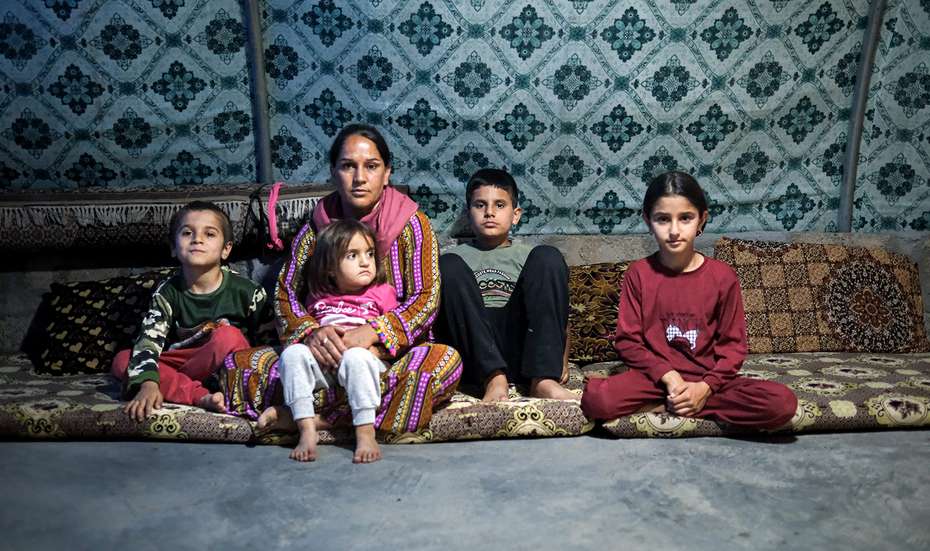
Amongst the ruins of her home, stands a tent belonging to Base, a 35-year-old mother and her family. After ten long years they made their return in mid-April, using vehicles provided by the government from Arbat Camp in Sulaimaniyah to Digure village. Base and other families gathered their tents and other belongings provided as aid years back to their home village. “Upon my return, I saw my family members and I couldn’t recognize them anymore,” said Base.
Returning from the camps, in hopes of rebuilding a home, most returnees now live in tents or homes of relatives, which are unsustainable solutions during Iraq’s current extreme weather fluctuations of heat and thunderstorms. “Our future is uncertain. Without support, we have no idea what lies ahead of us,” said Base, with her four children gathered around her, in the heat of June.
Facing uncertainty
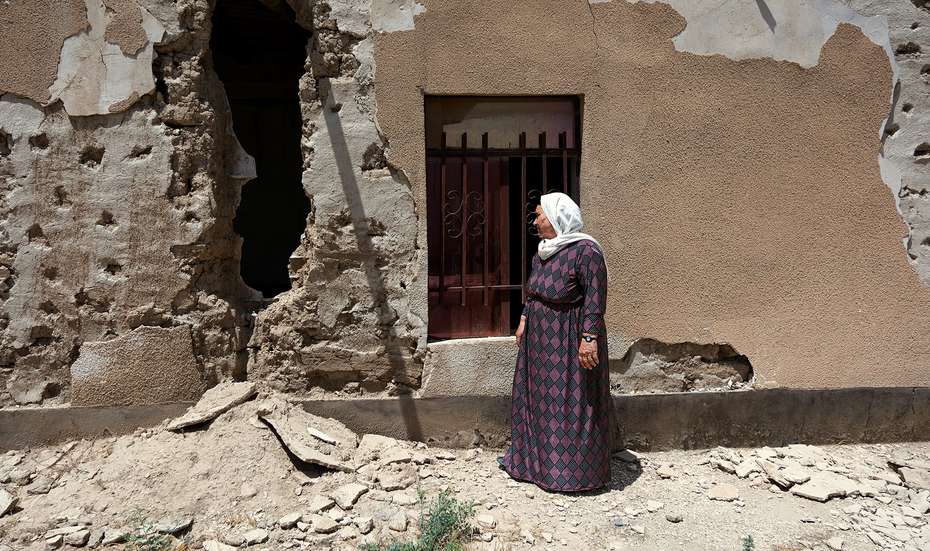
While the government promised jobs, social security benefits, and interest-free small business loans, this is yet to be seen. We meet Shirin, a 55-year-old single mother who made her return in December 2023, in her destroyed home, with a tent installed in her yard. “I live in a relative’s house, the tent is my backup for when it’s time for me to leave,” said Shirin. “I can’t sleep at night, I constantly think about my home and the impossibility of rebuilding it… it’s very difficult,” she added.
The recent returnees are living in dire situation. Many have little to no access to water or bathrooms, and the lack of hygiene is an increasing health concern. The population of the villages of Digure and Sibaye are currently buying water for drinking and daily use, which through no employment opportunities and no income, will further worsen their situation.
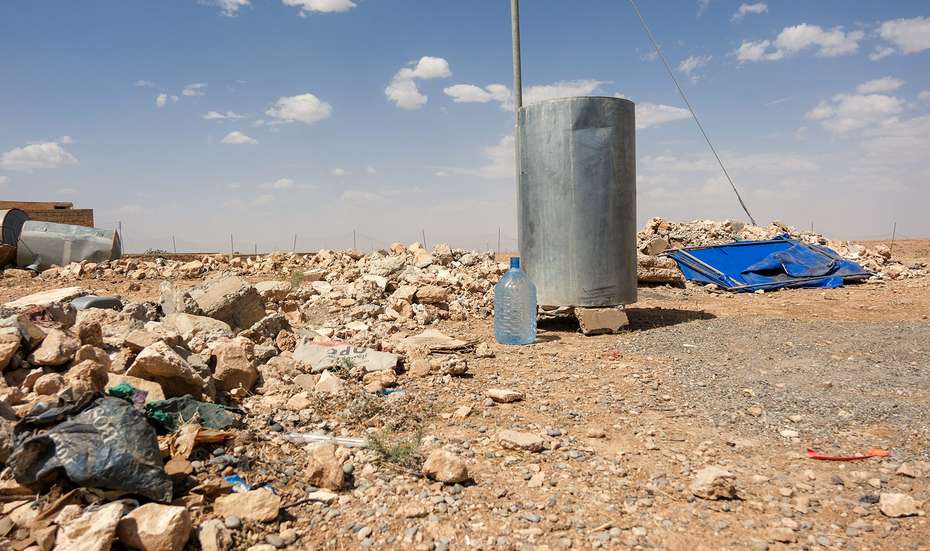
On the edge of Digure village, three tents are installed facing the mountains of Sinjar, belonging to the three brothers; Murad, Said and Asad and their families. “Living in the camps was an unpleasant experience, but we still had access to water, electricity and daily work,” said Murad, the eldest brother, who used to work as a farmer in Sulaimaniyah during his displacement.
The current economical market of Sinjar is weak, with employment opportunities rarely available. The returnees are considering returning to KRG for daily work to provide for their families. Many are currently struggling to provide food and water for themselves and are being supported by others. Food and nutrition remain one of the most essential needs. Morixan, the nine-year-old daughter of Murad said: “Beans are my favorite food, and I have not had it in quite some time.”

The journey back
Thirty-minutes away from Sinjar town, Sibaye village is located, where Majdal and Goze’s home is, who returned to Sinjar on 21st of May. “We felt at ease to return, this is our only home,” said Majdal, the 40-year-old father. Majdal is currently providing for his family through money they collected in his previous farming job in Mam Rashan camp near Shekhan, southeast of Duhok.
Sibaye village still lives amongst destruction, with little to no infrastructure for its 20,000 families. While the communities wish to come back home, they live in the fear of returning to little to nothing. Sibaye currently does not have a good water distribution system. While water is one of the main issues, the unavailability of health facilities is also an issue, with one health center throughout the village for the families, as well as the lack of access to basic schooling. “We urgently need water, shelter and education,” said Basma, Majdal’s fifteen-year-old daughter.
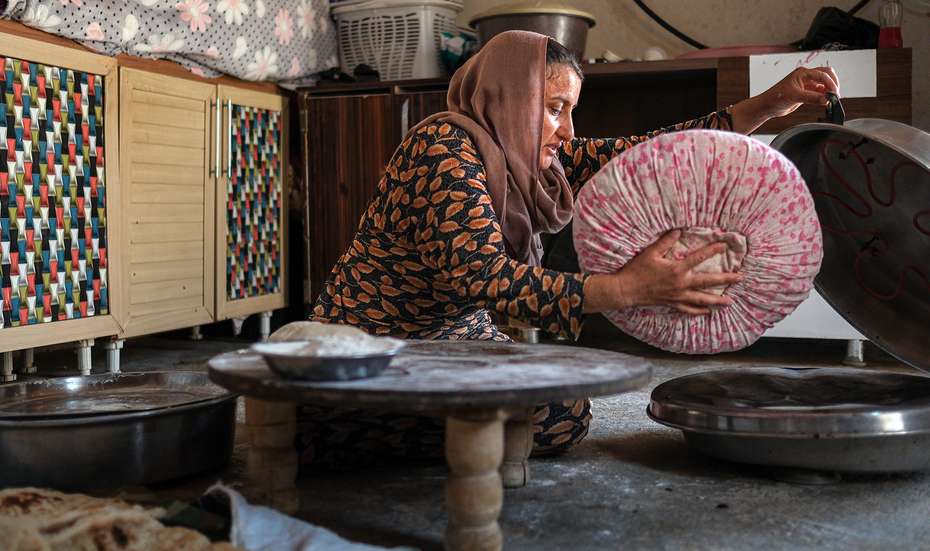
With no immediate action, the newly returnees will soon not be able sustain themselves, potentially causing secondary displacement. Their concerns regarding proper housing, water, shelter, and health needs to be responded to. “The NGOs need to return and support us once again,” said Majdal.
Rebuilding hope hand in hand
While the needs of the newly returnees remain underdetermined, the need for basic services is evident, as they call for urgent access to water, shelter, health, and basic schooling. Furthermore, the improvement of the provision of services such as electricity, public health needs to be covered. Restarting income generating activities through livelihood support is also important, so that the families can rebuild their lives in dignity. This needs to begin through coordination amongst the communities, government, local and international NGOs, to rebuild the lives of many in safety and security.
Welthungerhilfe in Sinjar
Since 2017, Welthungerhilfe Iraq has been working closely with the different communities in Sinjar. So far, through 18 projects, we have been able to provide support with infrastructure rehabilitation, Cash for Work, WASH, cash grants, cash for protection, agricultural businesses, agriculture support, business development support and vocational trainings. Through our initiatives, we have reached 31,947 individuals, with our impact reaching 40,7182 individuals.
In Sinjar, Welthungerhilfe Iraq, in collaboration with The Deutsche Gesellschaft für Internationale Zusammenarbeit (GIZ) GmbH, with financial support from The Federal Ministry for Economic Cooperation and Development (BMZ) is currently implementing the projects 'Supporting a Resilient Economic Recovery by Strengthening SMEs and Agriculture in Sinjar district, Ninewa governorate' and 'Supporting Employment Promotion and Increased Income for Vulnerable Communities in Iraq'.


